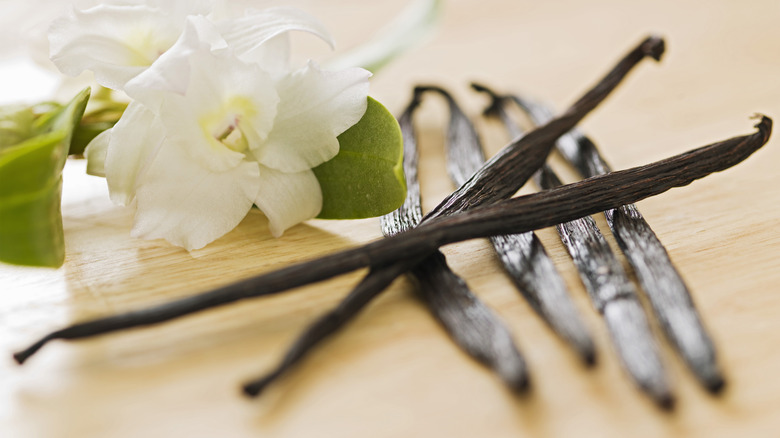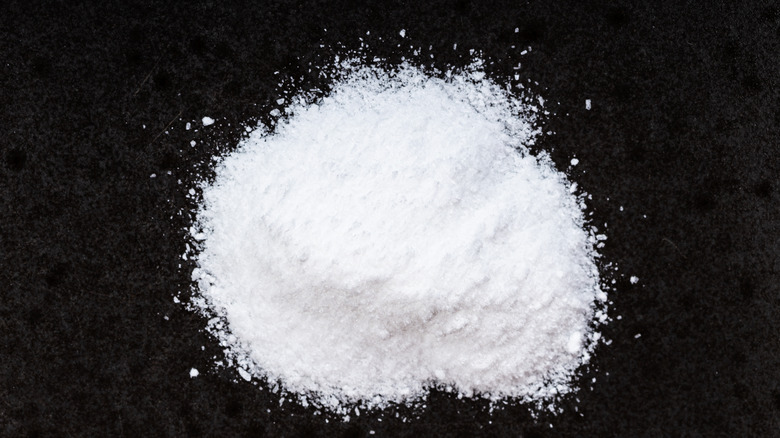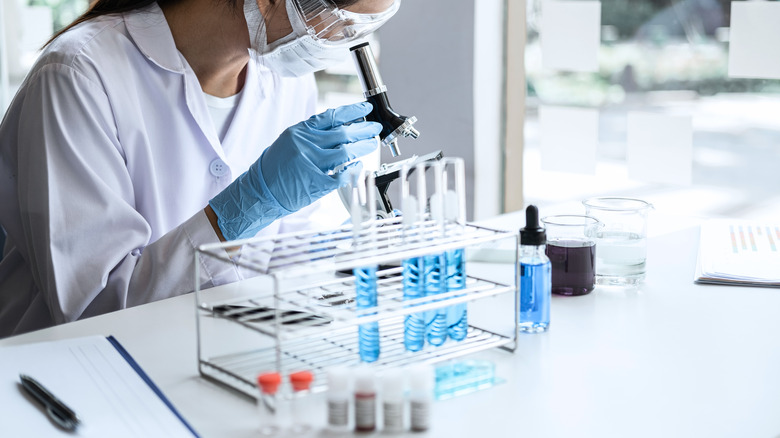How Scientists In Scotland Made Vanilla Out Of Recycled Material
Pollution and waste are some of the biggest ecological problems facing society today. Scientists are constantly trying to figure out ways to effectively reduce waste and improve recycling methods. One issue that often comes up is the efficacy of recycling. Many people might assume that recycling is always efficient, but this actually isn't the case. According to The Atlantic, plastic is so diverse in composition and chemical makeup that plastic sorting is almost next to impossible. Another issue is that plastic waste reprocessing is hazardous, with much of it being done in impoverished communities.
With that being said, scientists have recently figured out a way to seemingly make vanilla flavoring out of plastic waste. As stated by The Guardian, this process involves special complex bacteria that is really good at breaking down the chemical polymers that make up everyday plastic products. This process also produces vanillin, which is used for numerous flavorings, cosmetic products, pharmaceuticals, and much, much more. But how does this entire process work?
Why producing artificial vanilla is important
Finding alternative ways to make vanillin is extremely important. As of now, the world is facing a huge vanillin shortage. According to Scientific American, vanilla as a mass-produced ingredient is actually a somewhat recent creation. Until the year 1841, vanilla was incredibly rare, reserved only for the upper crust of European aristocracy. Edmond Albius, who was a French colony slave, discovered how to produce vanilla beans from vanilla orchids. This discovery changed the world, leading to things such as vanilla ice cream and vanilla fragrance.
Madagascar is the vanilla capital of the world, being responsible for 80% of the vanilla shipped and produced today (as well as the namesake of a crazy beast). However, natural vanilla is quite a labor-intensive crop, usually taking years to make, and there's just not enough to meet the rising demand. This has led to higher prices and fewer vanilla products on the store shelves. According to The Economist, this makes it all the more imperative to produce vanilla's synthetic cousin.
From waste to vanillin
Producing vanillin just might get easier with the new method of breaking down plastic waste into the chemical compound. According to The Guardian, this process involves special E. coli bacteria, which was engineered to convert plastic waste into vanillin. The way it works is that scientists first break up polyethylene terephthalate polymers, which make up many plastic products, with special enzymes. These mutant enzymes turn these polymers into terephthalic acid, which can then be converted to vanillin with the engineered bacteria.
This project was led by researcher Joanna Sadler, who works at the University of Edinburgh, along with researcher Stephen Wallace and others. Their work was published by scientific journal Green Chemistry, which goes over the process more in-depth. Essentially, when terephthalic acid is subject to a microbial bath heated to a temperature of 98.6 Fahrenheit, it begins to convert into vanillin. Scientists aren't quite sure whether or not this will help fix the plastic waste crisis, but the research for it so far is incredibly interesting.


